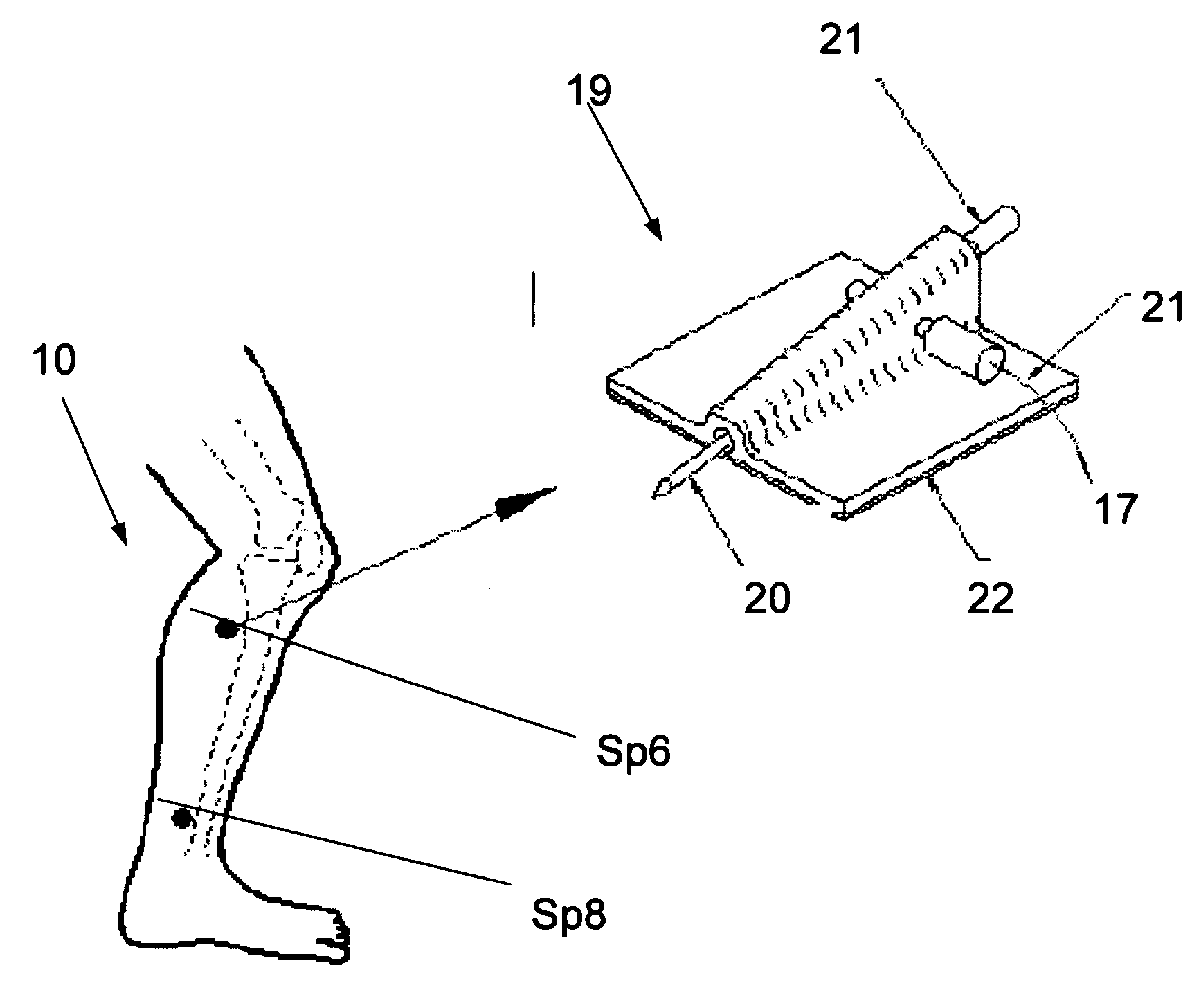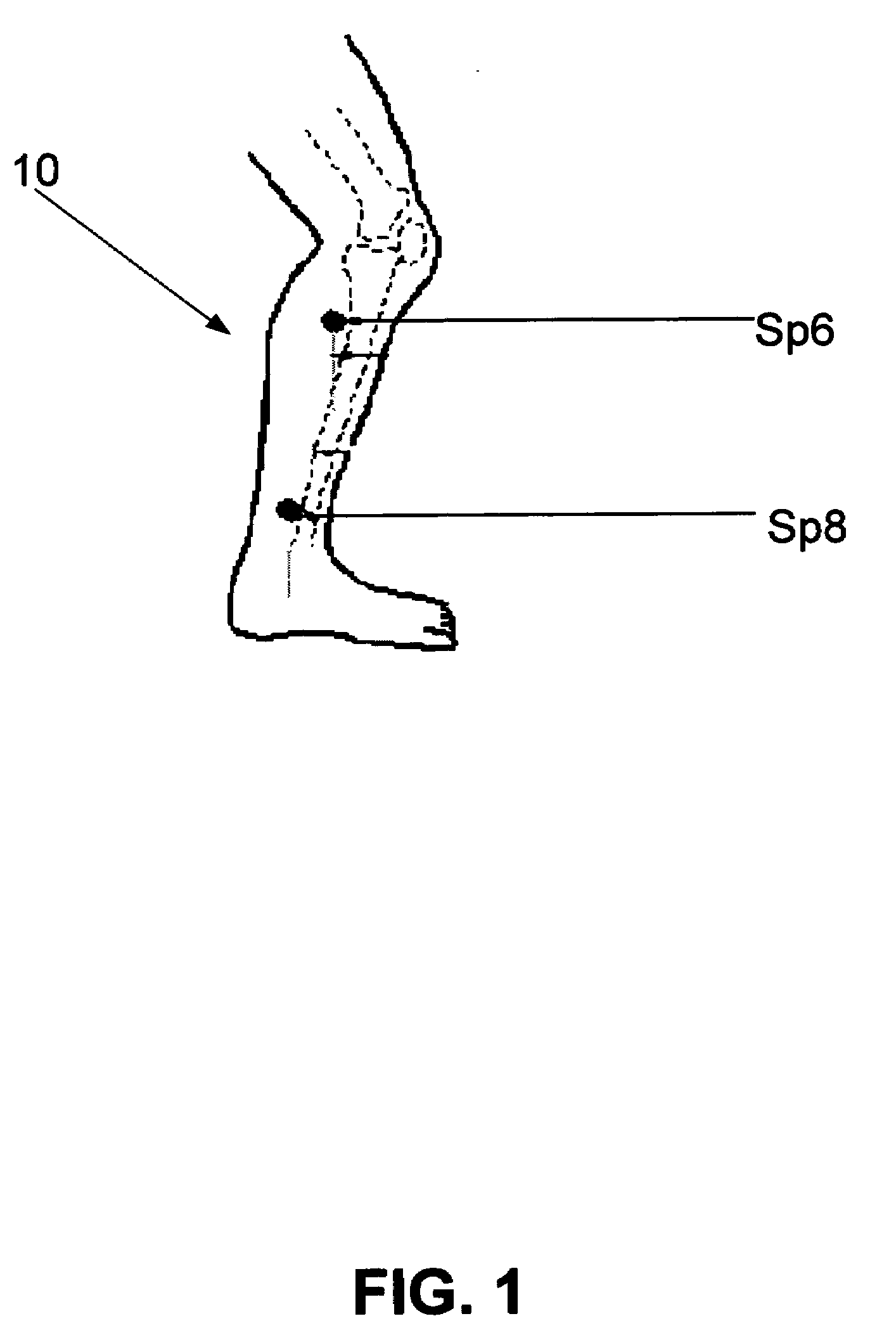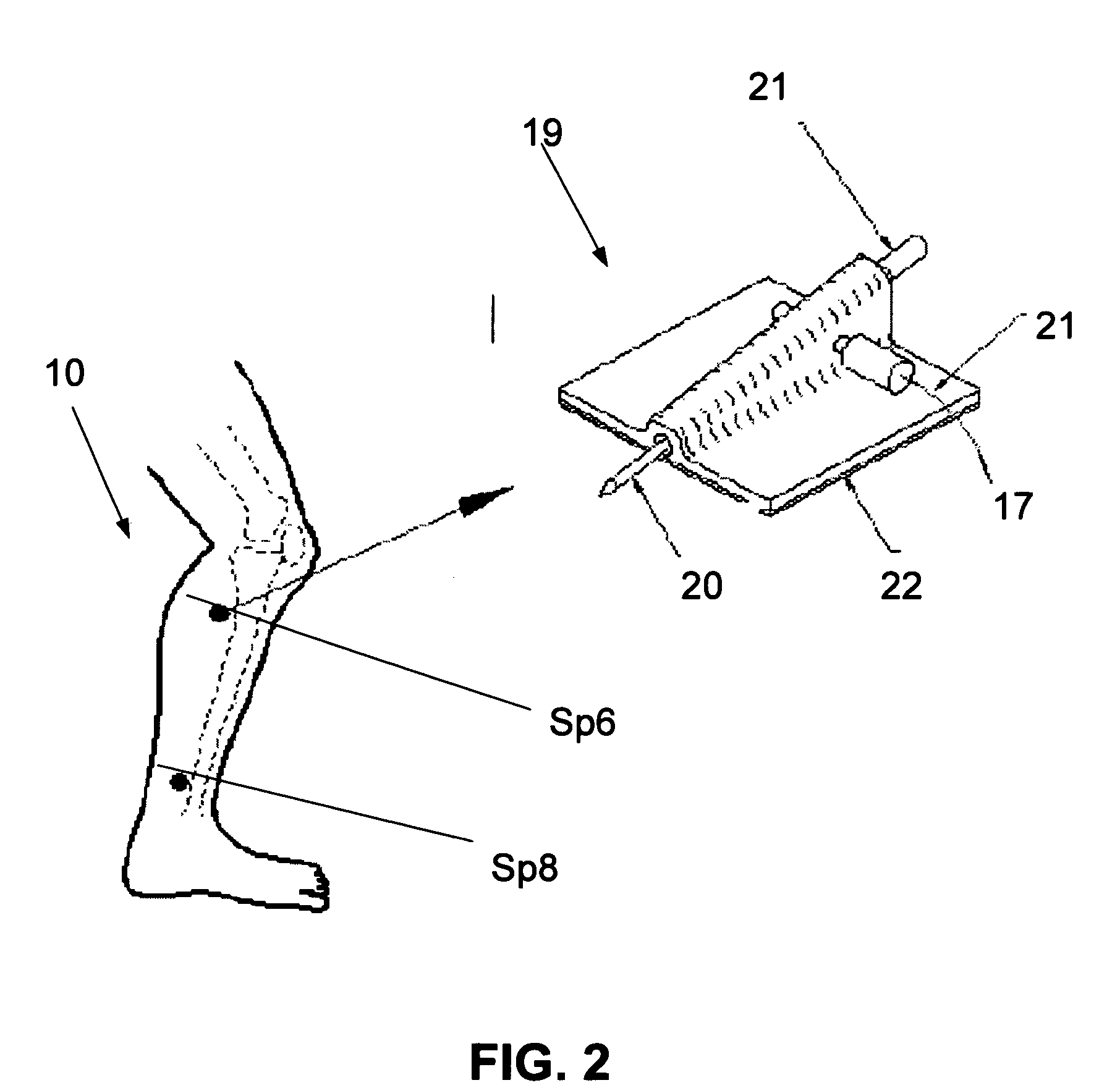Method of pain relief in patients after abdominal/pelvic surgery
a technology of abdominal/pelvic surgery and pain relief, which is applied in the field of electric therapy, can solve the problems of delayed discharge, few complications, morbidity and other problems, and achieve the effect of reducing pain and discomfor
- Summary
- Abstract
- Description
- Claims
- Application Information
AI Technical Summary
Benefits of technology
Problems solved by technology
Method used
Image
Examples
Embodiment Construction
[0030]While this method is well-suited to treat low abdominal / pelvic pain of various etiologies, it is particularly effective in postoperative pain control for women undergoing gynecological or abdominal surgery.
[0031]According to this method, post-surgical patient starts receiving percutaneous electrical nerve stimulation or electro-acupuncture after she comes out of general anesthesia
[0032]According to one of the implementations of this method, treatment starts post-surgically, usually 24 hours after patient comes out of general anesthesia. This time is given as an example and the treatment can be started earlier or later than 24 hours. The percutaneous electrical nerve stimulation is administered to the points located on the medial side of the low extremities, near the posterior margin of tibia, where saphenous nerve passes. In its basic form, there can be only one needle and one standard electrode for subcutaneous electrical nerve stimulation used on one leg only. In this case, ...
PUM
 Login to View More
Login to View More Abstract
Description
Claims
Application Information
 Login to View More
Login to View More - R&D
- Intellectual Property
- Life Sciences
- Materials
- Tech Scout
- Unparalleled Data Quality
- Higher Quality Content
- 60% Fewer Hallucinations
Browse by: Latest US Patents, China's latest patents, Technical Efficacy Thesaurus, Application Domain, Technology Topic, Popular Technical Reports.
© 2025 PatSnap. All rights reserved.Legal|Privacy policy|Modern Slavery Act Transparency Statement|Sitemap|About US| Contact US: help@patsnap.com



